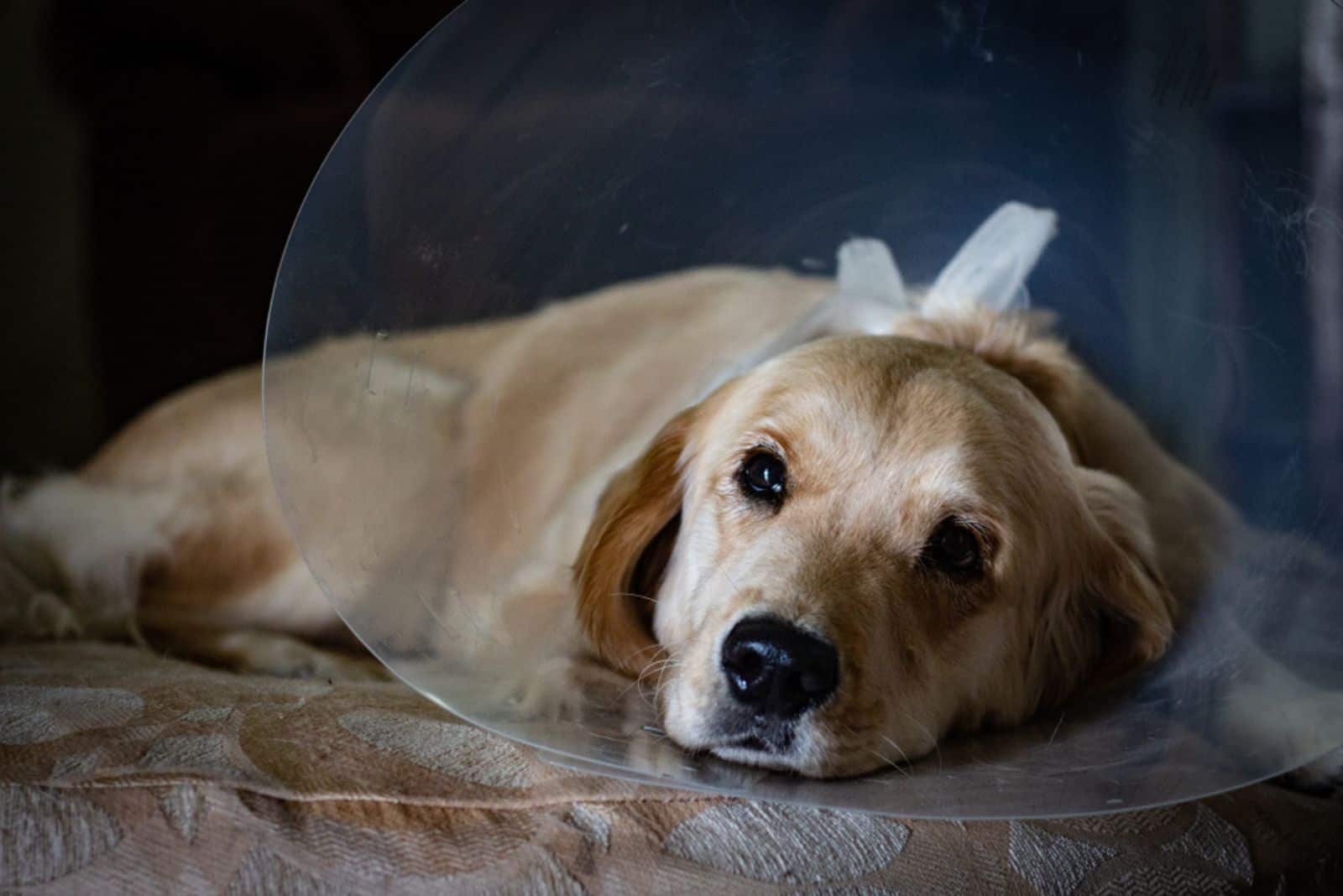Deciding when to spay or neuter a Golden Retriever can be a tough choice for any dog owner. The decision to have your dog fixed in the first place can be a difficult hurdle in itself, but once you’ve crossed it, you still have to figure out what the best time is for the procedure.
There are many benefits to sterilizing your Golden, but there are also some potential risks involved, so it’s natural to be wary and feel worried about your dog’s well-being.
But, we are here to help you drive away some of that worry. The medical procedures of spaying and neutering are incredibly common in modern-day veterinary medicine, and they can be a painless experience if done properly and on time.
In this article, we will go into detail about all of the factors that determine the best possible age to have your Golden Retriever neutered or spayed.
In addition to that, we will cover the differences between the two procedures, the subsequent consequences and effects they leave on your dog, as well as all of the potential risks and downsides related to spaying/neutering.
If you have a Golden Retriever puppy, and you’re already thinking about when to fix it, then reading this will definitely make a lot of things clearer for you.
When Do You Spay Or Neuter A Golden Retriever?
If you are wondering how to know what the perfect time is to sterilize your Goldie, there will be some clear signs that your dog should be neutered.
For the majority of dogs, the general rule of thumb is that they should not be spayed or neutered before they’re at least six months of age. However, this time frame is slightly different when it comes to Goldens.
Golden Retrievers should not be spayed or neutered until they are at least one year of age. Having them go through the procedure any earlier than this would restrict their access to the hormones that are essential for growth and bodily development during their puppyhood.
We’ll go into more depth about the consequences of premature spaying and neutering later on in the article, but let us first clear up all the confusion about the two methods.
What Is Spaying And Neutering?
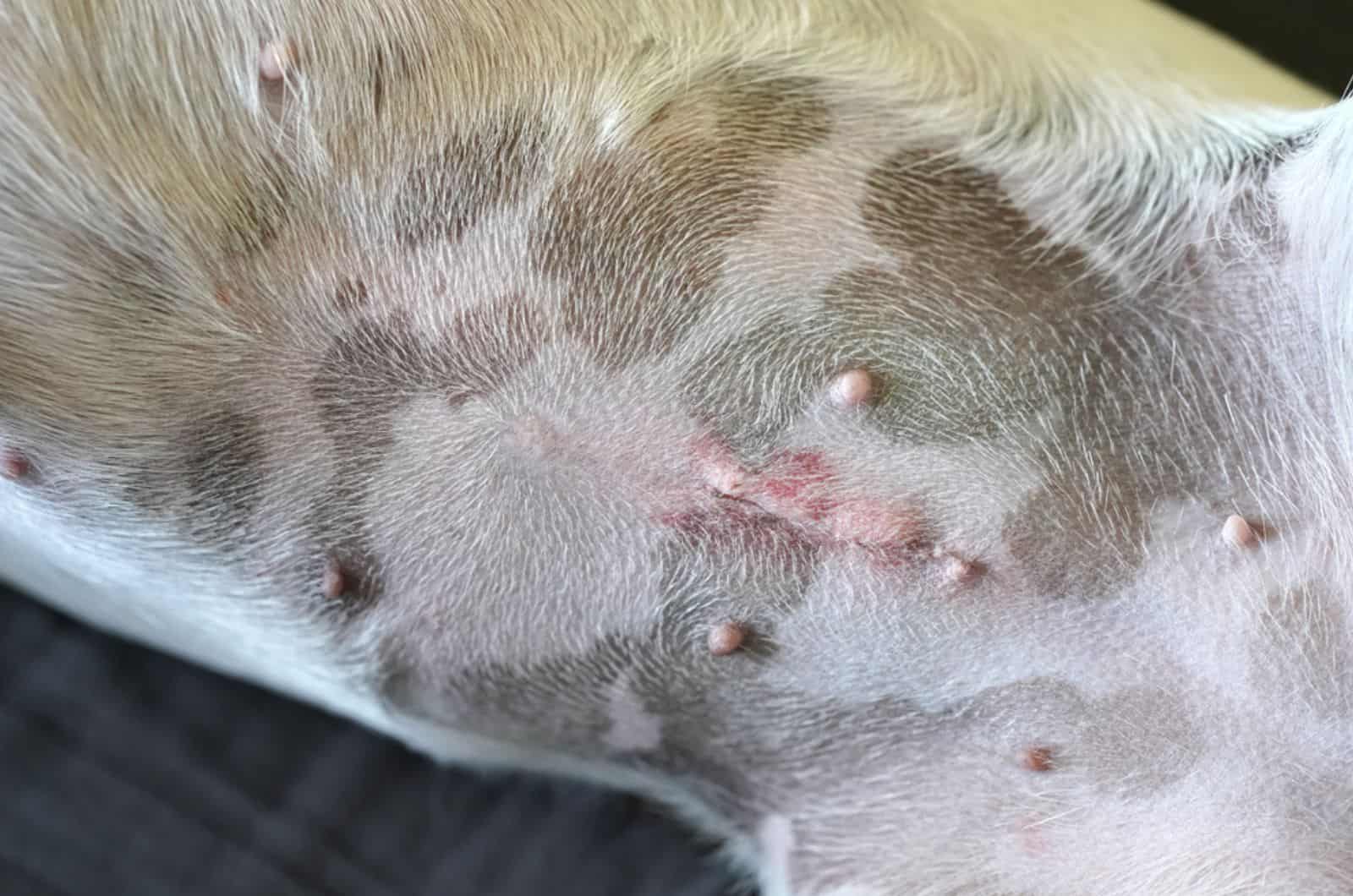
Spaying and neutering are two slightly different surgical procedures that are used to prevent animals from reproducing. Sterilization can be used as a more general term that encompasses both of these.
Dogs that have not been spayed or neutered are usually referred to as intact dogs.
Since it prevents unwanted offspring, dog sterilization is often used by kennels as a means to slow down overpopulation, but also by some breeders who want greater control and influence over their puppies’ genetic makeup. A lot of them don’t want their dogs’ genes involved in other litters, so they choose to neuter them.
Aside from population control and breeding practices, neutering/spaying can also be chosen by regular dog owners who simply don’t want to risk the chance of having to take care of an entire litter of puppies in addition to their existing adult dog.
But, beyond that, it can actually bring a lot of benefits to your dog’s behavior and overall health.
Is There A Difference Between Neutering and Spaying?
The difference between the two procedures lies in the fact that one is reserved for females, and the other for males.
Spaying, also known as ovariectomy, is performed on female dogs, and it involves removing their ovaries, and sometimes their uterus, too.
Neutering, or castration, if you prefer, is done on males. It is the process of removing the dog’s testicles.
In addition to the practical differences in performing these two surgical procedures, there are also gender-specific elements that help us determine when they should be performed. It’s not always the same for male and female Golden Retrievers, and there are separate factors that need to be taken into account.
When Do You Spay A Female Golden Retriever?
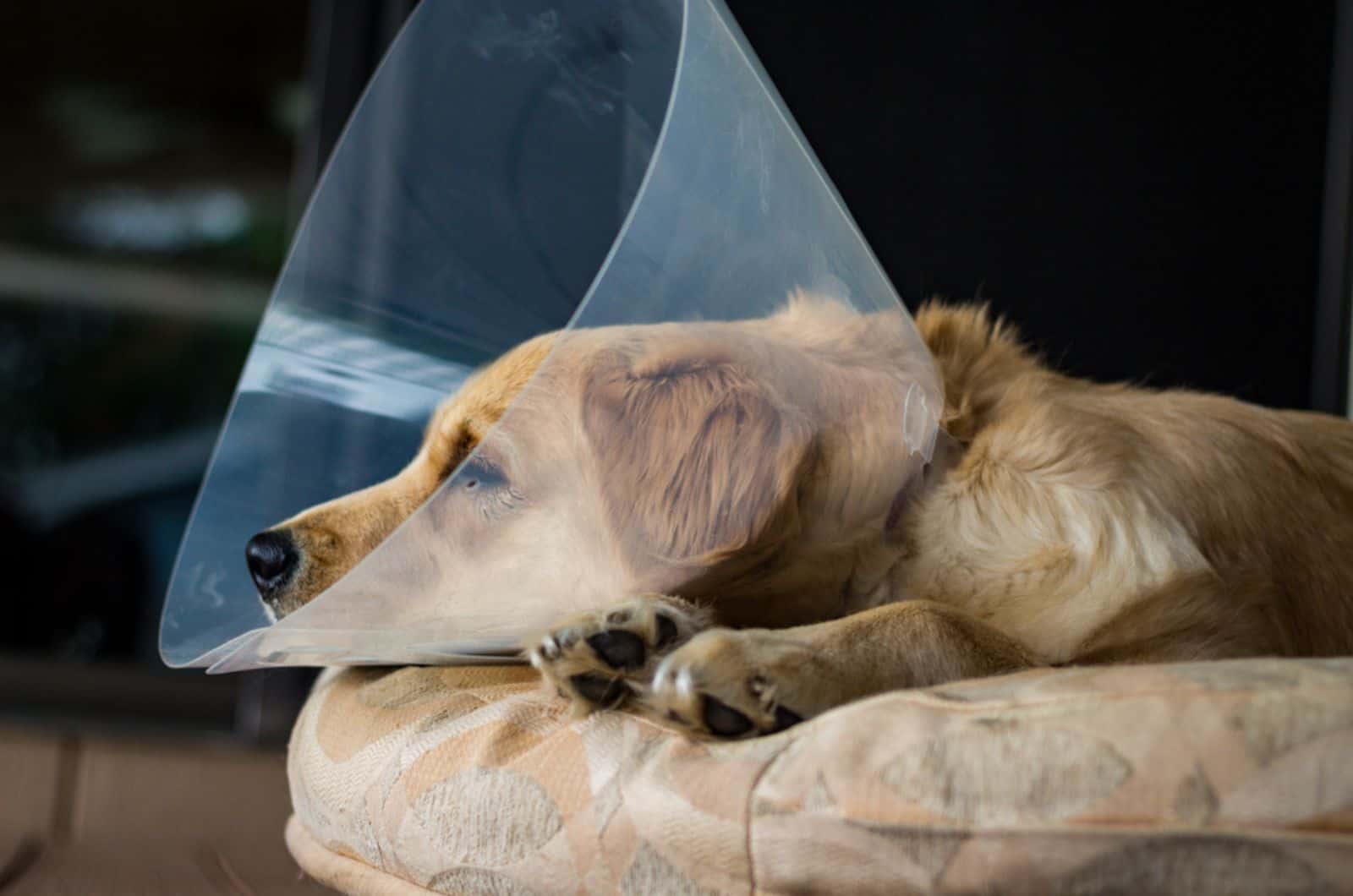
There are a few different schools of thought on this topic. Generally, the rule is that female Goldens should be spayed after they’ve turned one year old, but there are some experts that claim that it should be done before they’ve reached their first heat cycle.
Additionally, some people suggest they should not be spayed at all because of the potential risks and the negative effects that spaying can have.
Obviously, spaying a female has significantly different consequences than neutering a male. After they have been spayed, they can no longer give birth to puppies, and since the procedure is irreversible, that is usually the biggest factor in every female Golden Retriever owner’s decision-making process.
Also, there are some significant changes in a female dog’s behavior after spaying, so you should check them out, too.
When Do Female Golden Retrievers Have Their First Cycle?
First of all, let’s define what a heat cycle is for anyone who might not be familiar. A heat cycle, otherwise known as the estrous or reproductive cycle, is the period in a female dog’s life in which she can get pregnant. The average age at which all female dogs reach their first heat cycle is around six months.
Essentially, it is during the time in which they are going through puberty. However, since the entire process of physical development tends to last longer for larger dogs (like Golden Retrievers, German Shepherds, or Great Danes), their first cycle will also come around a little later.
Their body takes a little more time to fully grow and develop than that of a Poodle or a Corgi, so it makes sense that their preadolescent stage will last a bit longer.
For female Golden Retrievers, the first heat cycle normally happens between 10 and 14 months of age. Subsequent cycles keep coming every six months, and they typically last for two or three weeks at a time.
Of course, once they have been spayed, female dogs will stop having their estrous cycles.
Is It Okay To Spay A Female Golden Retriever Before She Goes Into Heat?
Spaying a female Golden Retriever not only prevents her from ever having any unwanted offspring (such as humping behavior), but it also greatly reduces the risk of mammary cancer and pyometra, which is a potentially life-threatening type of uterine infection.
Mammary tumors are more frequent in smaller dogs, but they’ve been known to occur in larger breeds, such as the Golden Retriever. The most affected groups are intact females or those that were spayed after two years of age.
According to the American College of Veterinary Surgeons, the chance of a female dog developing mammary cancer is 0.5% if she’s spayed before her first heat cycle, 8% if spayed in between the first and second cycles, and 26% after the second cycle.
That’s why a lot of veterinary health experts argue that the best time to spay a Golden Retriever female is before she first goes into heat.
When Do You Neuter A Male Golden Retriever?

It is generally thought that the best age of neutering a Golden Retriever male is after they’ve reached full sexual maturity. This happens at approximately one year of age.
This particular time frame is backed by a recent study led by Dr. Benjamin L. Hart, who is a distinguished professor emeritus at the University of California, Davis School of Veterinary Medicine.
The study, performed in cooperation with the American Kennel Club’s Canine Health Foundation, has confirmed what was intuitively known, which is that you simply cannot apply the same standards across dozens of different dog breeds.
Furthermore, when it comes to the specific example of Golden Retrievers, the UC Davis team discovered that the risk of cancer in Goldens is around 10% when they are intact, 13% if they are neutered before six months of age, and 12% if they are neutered between the ages of six and 12 months.
Based on these findings, among others, Dr. Hart et al. have suggested that if you choose to neuter your Golden, it’s best to wait after their first birthday has passed.
Your Golden probably won’t think that removing his testicles is a great birthday gift, so be sure to bake him a cake.
Sexual Maturity In Male Golden Retrievers
Male Golden Retrievers aren’t as susceptible to cancer as females are, but they can also have serious health issues if they aren’t castrated at the correct time.
Sexual maturity is an important distinction because once dogs reach that point in their life, that means that all the hormones that affect growth and anatomical development have been released.
Neutering a Golden after this point will not harm his growth in any way.
Of course, male dogs can’t get pregnant as females can, but they can still produce offspring if they are intact. Neutered dogs are not only incapable of creating offspring, but they are also generally believed to have a diminished sexual drive and less aggressive tendencies.
Spaying And Neutering A Golden Retriever Too Early
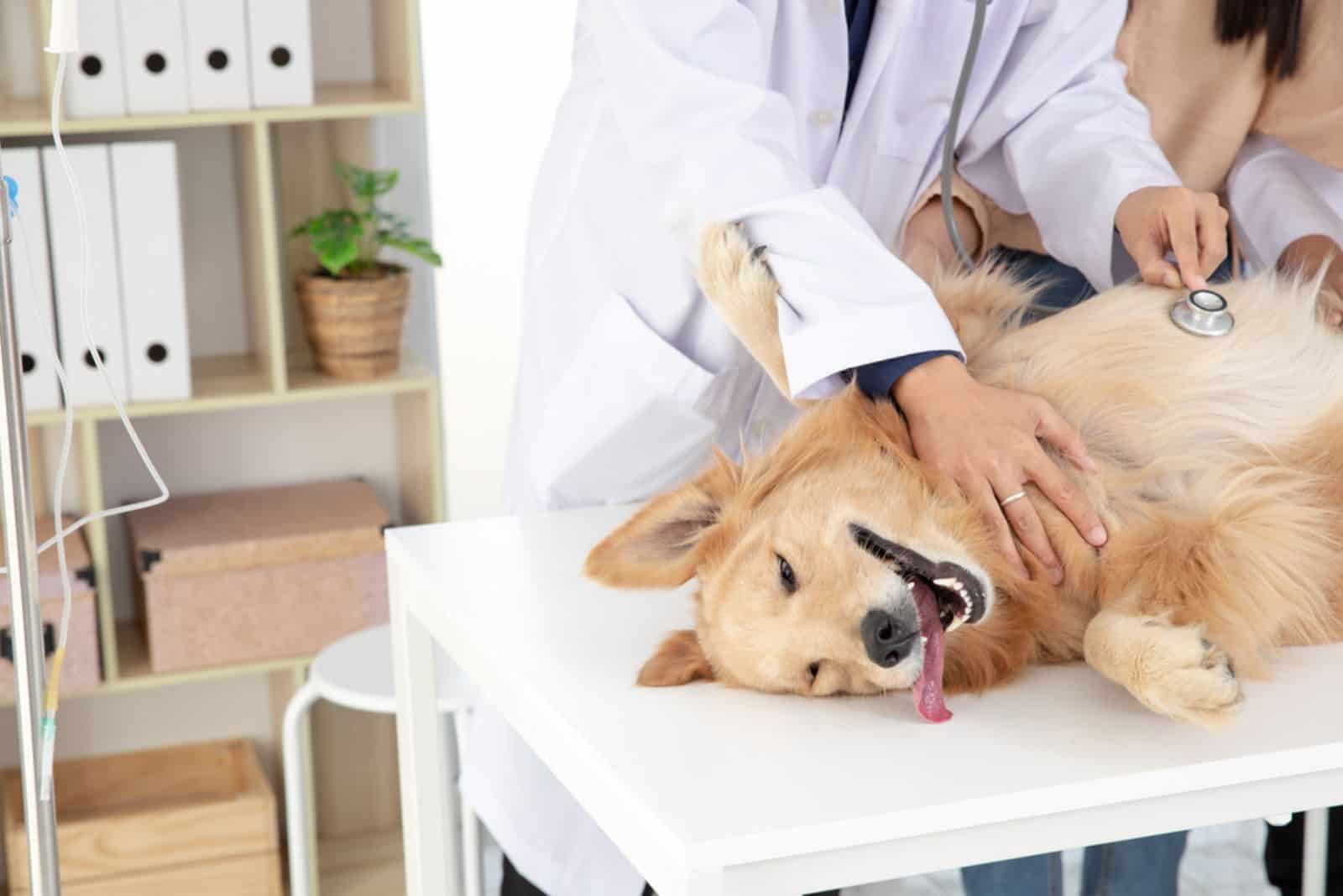
While it can be somewhat risky to leave your Golden Retriever intact, there are arguably even more risks involved in getting it fixed before the time is right.
There are multiple common health issues that can arise in dogs that have been spayed or neutered too early. It’s too important of a topic to gloss over, so let’s talk about some of the most frequent ones.
Problems With Bones And Joints
Bone and joint disorders are probably the most common problems that early spaying and neutering cause in Goldens.
This is because dog breeds like the Golden Retriever and the Labrador Retriever are already predisposed to joint issues, and when you combine that with a lack of sex hormones caused by neutering, they are bound to be at an increased risk.
You see, sex hormones play a big role in the early development of healthy bones and joints, so if access to them is cut off before the development is completed, the dog will be much more vulnerable, and it will be harder for it to develop a strong adult body.
Some of the most common joint issues are hip dysplasia and ligament tears.
Hip Dysplasia
Described in the simplest of terms, hip dysplasia is when the thigh bone doesn’t fit properly with the pelvis. This can be a very distressing condition for dogs as basically every step they take causes them pain.
There is also a similar condition called elbow dysplasia, but that one is slightly less common.
Cranial Cruciate Ligament Tears
Continuing with the theme of skeletal problems, we move on to cranial cruciate ligament tears. While it might sound like an injury that happens to a professional athlete, it is, in fact, an ailment that quite often plagues Golden Retrievers that have been fixed too early.
It is essentially a tear in the main ligaments of the knee, and it can be excruciating for the poor dog that suffers from it. It can even go so far as to make them unable to bear any weight on the afflicted leg or even cause long-term arthritis.
Hypothyroidism
Hypothyroidism is a medical condition that causes the thyroid gland to become less active than it’s supposed to be.
This decreased activity leads to a significant slowing down of the body in general, and it eventually manifests itself in poor skin health, coat issues, and more behavior issues, such as lethargy and weight gain.
All dogs that get fixed before they are 12 months old can be struck by this illness, but that risk is far greater in Golden Retrievers as they become 80% more likely to experience it.
The trouble with hypothyroidism is that it isn’t a definite cure. It instead requires your Golden to have surgery, and then be put on an ongoing medication plan.
How Safe Is Spaying And Neutering?

The actual processes of neutering and spaying are common, to say the least. They are probably the most frequently performed operations in the canine world, but that still doesn’t mean that it’s a routine procedure. It should not be taken lightly.
Modern equipment and technology have made sterilization safer than ever, but as a dog owner, you should always make sure that you give your Golden Retriever the best veterinary care that you can.
When it comes to the immediate postoperative period, your dog can experience some mild pain and discomfort. This should only last for a couple of days… no more than a week.
However, it will take more than a week for the stitches to come out, so your Golden will probably have to wear a cone for a while in order to stop him or her from licking and biting the scar. For more information, read our article on when to take the cone off of a dog after being neutered.
Potential Risks
Beyond the mere procedure, there are other potential dangers related to spaying and neutering. There are studies that show that dogs that have been fixed either too early or too late have a higher incidence of developing a multitude of diseases.
These include previously mentioned joint issues like hip dysplasia and cranial cruciate ligament tears, and also conditions such as lymphosarcoma, osteosarcoma, hemangiosarcoma, and mast cell tumors.
Additionally, it is believed by some people that sterilization can result in urinary incontinence (the inability to control the bladder) in some dogs, but the most recent studies have shown that there is no evidence to back that up.
See Also: Infected Dog Spay Incision Healing Process: What Happens After Spay Surgery?
How Does Spaying Or Neutering Affect Your Golden Retriever’s Personality?
It is commonly believed that fixing a dog will turn them into a calmer, less aggressive pet that doesn’t hump your furniture or urinate all over the carpet.
That is only true to a certain degree. Studies have shown that about 40% of dogs show improvements in their urinating habits after being spayed or neutered, while only around 20% become noticeably less aggressive.
There are also those who believe that neutered males and spayed females are much less active and playful than intact dogs, or that they start having trouble with obesity. That is often used as an argument against the procedure.
However, the truth is probably somewhere in the middle. The impact of sterilization is much more complex than we think, and each individual dog will experience it in their own unique way. Like with most things in life, there isn’t a single universal answer.
See Also: Infected Dog Spay Incision Healing Process: What Happens After Spay Surgery?
The Final Word
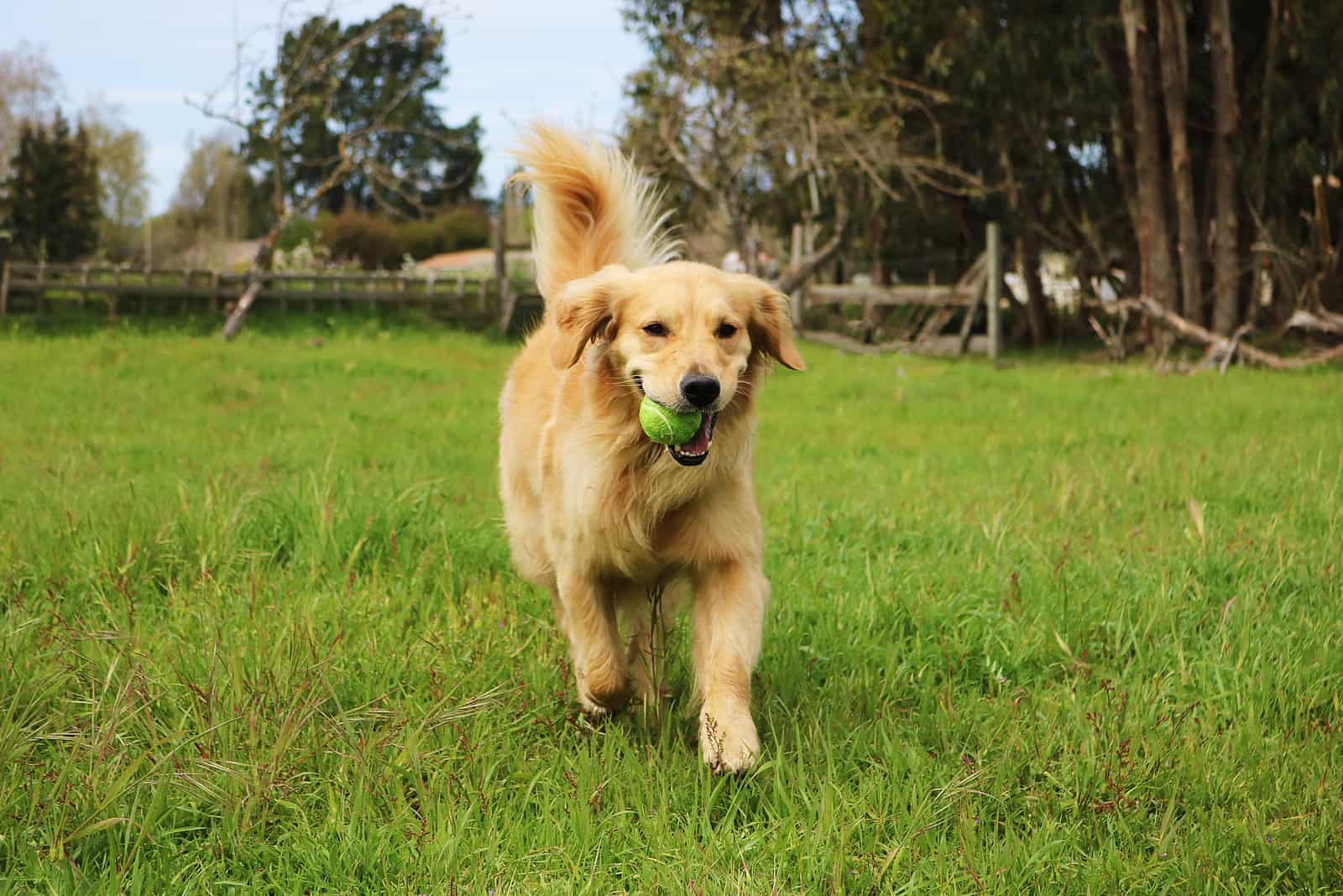
Choosing if and when to spay/neuter a Golden Retriever is by no means an easy decision. So, with that in mind, it’s important that the decision is a well-informed one.
Educating yourself as much as you can about the procedure and its effects is something you should definitely consider before finally deciding to go through with it.
Thankfully, in today’s world, there is so much easily accessible information out there, so you don’t have to feel like you’re in the dark.
We know that your dog’s health is the most important thing in this whole story, so we wanted to shed some light on the often controversial topic of sterilization and help you out.
With this article, we tried to boil everything down to the most important factors, and present you with the facts. We think it’s a good guideline for any pet owner looking to fix their dog for one reason or another.
To quickly recap once more: when it comes to spaying/neutering Golden Retrievers, most experts suggest that you should wait until they are 12 months of age.
Related Content
• How Long Will My Dog Be In Pain After Neutering? Pain Management Tips
• A Dog in Heat: What to Expect From a Female Dog After Mating
• Signs That A Male Dog Wants To Mate: Male Dog In Heat Behavior
